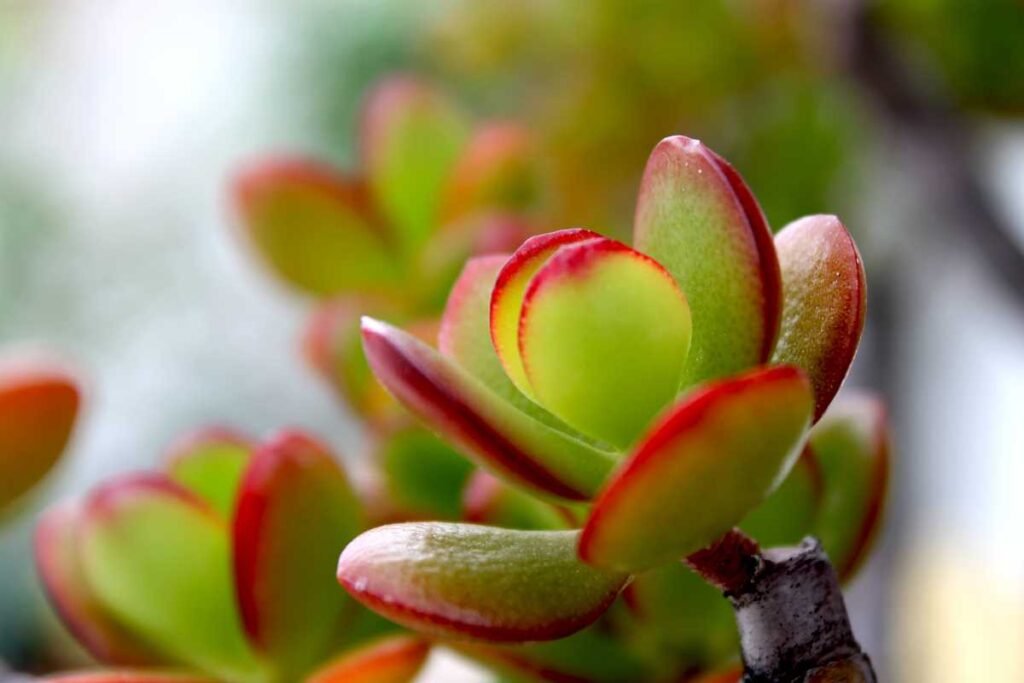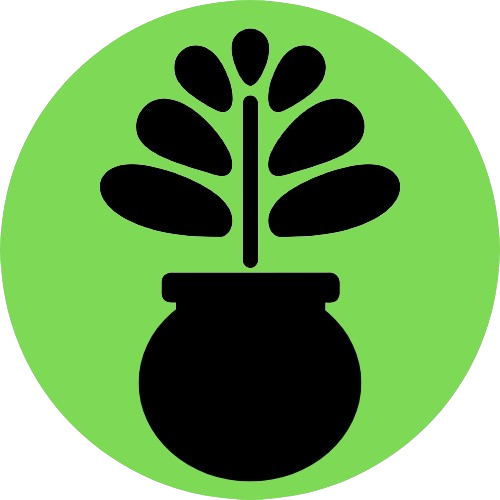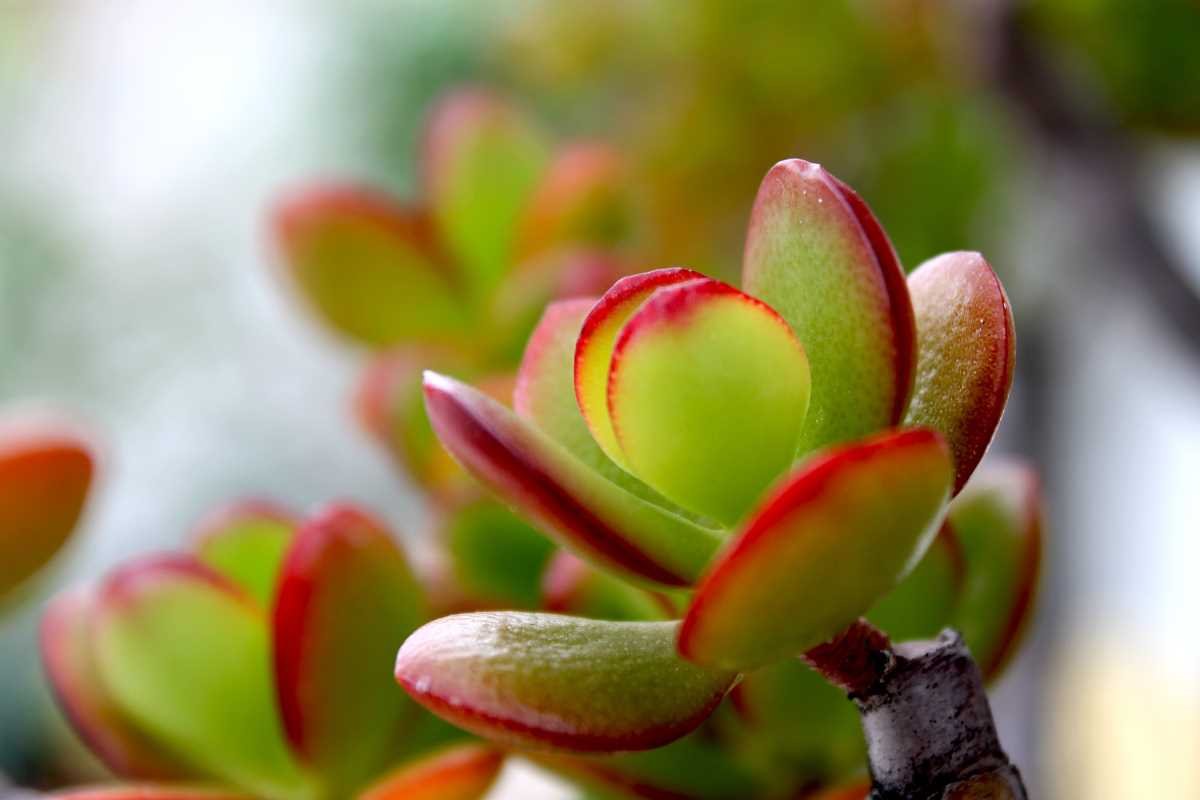Jade plants, scientifically known as Crassula ovata, have long been cherished as popular indoor plants, celebrated for their ease of care and distinctive appearance. Originating from the arid regions of South Africa, these succulents have adapted remarkably well to indoor environments around the world. Their thick, fleshy leaves store water, making them resilient and relatively low-maintenance, ideal for both novice and seasoned plant enthusiasts.
The allure of jade plants extends beyond their hardy nature. Their glossy, coin-shaped leaves and tree-like architecture can add a touch of elegance to any indoor space. Over time, the stems of jade plants can grow woody, giving them a bonsai-like quality that adds to their aesthetic appeal. This unique combination of beauty and resilience has made jade plants a staple in homes and offices alike.
Another appealing characteristic of jade plants is their slow growth rate, which allows them to maintain a manageable size for extended periods. This makes them particularly suitable for indoor cultivation, where space might be limited. Additionally, jade plants are known for their longevity, often thriving for decades with minimal intervention, making them a rewarding long-term addition to any plant collection.
Moreover, jade plants are often associated with good luck and prosperity in various cultures, further enhancing their popularity. This cultural significance, coupled with their visual appeal, makes them a favored choice for gifting as well. As we delve deeper into the diverse world of jade plant types, we will explore the various forms and varieties that contribute to the rich tapestry of this beloved succulent.

Table of Contents
History and Cultural Significance
The jade plant, known scientifically as Crassula ovata, has a rich history and holds significant cultural value across various societies. Originating from South Africa, jade plants have been cultivated for centuries and have spread globally, becoming a beloved houseplant in diverse cultures. Their adaptation to various climates and conditions has contributed to their widespread popularity.
In the context of feng shui, jade plants are particularly revered. They are considered symbols of good luck, prosperity, and positive energy. Often referred to as the “money tree,” jade plants are commonly placed near the entrance of homes and businesses to attract financial success and harmony. The lush, green leaves of the plant are thought to resemble jade coins, further cementing their association with wealth and fortune. This belief has made jade plants a popular gift for housewarmings and business openings.
Beyond their role in feng shui, jade plants have also been used historically in traditional medicine. Indigenous communities in South Africa have utilized jade plant leaves for their purported healing properties. The leaves were often crushed and applied to warts, cuts, and other skin ailments, believed to expedite the healing process. Although these traditional practices are less common today, they highlight the versatile utility of jade plants in different cultural contexts.
In modern horticulture, jade plants continue to be celebrated for their aesthetic appeal and adaptability. Their low maintenance requirements and ability to thrive in a range of environments make them an ideal choice for both novice and experienced gardeners. The various jade plant types, including the Crassula ovata ‘Hobbit’ and Crassula ovata ‘Gollum,’ offer unique forms and foliage, adding to their desirability as ornamental plants. As a result, jade plants remain a staple in contemporary plant collections worldwide.
Basic Care and Maintenance
Caring for jade plants is relatively straightforward, making them a popular choice for both novice and seasoned plant enthusiasts. Understanding the basic care requirements for different jade plant types can ensure a healthy and vibrant addition to your indoor or outdoor garden.
First and foremost, jade plants have specific soil preferences. They thrive best in well-draining soil mixes, often favoring a blend designed for succulents and cacti. This type of soil helps prevent waterlogging, which can lead to root rot—a common issue for jade plants if overwatered.
When it comes to watering schedules, jade plants prefer a “soak and dry” approach. Allow the soil to dry out completely between watering sessions, and then water thoroughly. Overwatering is a frequent mistake that can cause significant harm to these resilient plants. During the growing season, typically spring and summer, you might need to water more frequently, while in the dormant winter months, watering should be reduced.
Light conditions play a crucial role in the health of jade plants. These plants flourish in bright, indirect sunlight. A south-facing window is often ideal, providing ample light without the risk of sunburn. While they can tolerate lower light conditions, insufficient light can lead to leggy growth and a lack of the characteristic plumpness in the leaves.
Temperature needs for jade plants are quite accommodating. They prefer a range between 65°F to 75°F during the day and can tolerate slightly cooler temperatures at night. However, they should be protected from frost and cold drafts, which can damage the plant.
Regular repotting, pruning, and pest management are also essential aspects of jade plant care. Repotting every 2-3 years helps refresh the soil and provides room for growth. Pruning not only maintains the plant’s shape but also encourages new growth. Common pests like mealybugs and spider mites can be managed with insecticidal soap or neem oil, ensuring your jade plant remains healthy and pest-free.
By following these basic care guidelines, you can enjoy the beauty and longevity of various jade plant types in your collection.
Most Beautiful and Unique Jade Plant Types:
Jade plants (Crassula ovata) are a popular choice for both indoor and outdoor gardening enthusiasts due to their hardy nature and visually appealing foliage. There are numerous varieties of jade plants, each with distinct characteristics that make them unique. Here, we will delve into some of the most notable types of jade plants, including Crassula ovata ‘Hummel’s Sunset,’ Crassula ovata ‘Gollum,’ Crassula ovata ‘Tricolor,’ and Crassula ovata ‘Minima.’
Crassula ovata ‘Hummel’s Sunset’:
This type is renowned for its stunning coloration. The leaves of ‘Hummel’s Sunset’ transition from green to a golden-yellow hue, with red edges that become more pronounced in bright light. This vibrant coloration, reminiscent of a sunset, makes it a favorite among jade plant enthusiasts. The plant typically grows to a height of 2 to 3 feet and has a compact, bushy growth habit.
Crassula ovata ‘Gollum’:
Named after the character from J.R.R. Tolkien’s “The Lord of the Rings,” ‘Gollum’ jade plants have tubular, finger-like leaves that are often tipped with a reddish hue. This variety is particularly distinctive due to its alien-like appearance. ‘Gollum’ jade plants can reach up to 3 feet in height and spread, making them an eye-catching addition to any plant collection.
Crassula ovata ‘Tricolor’:
As the name suggests, this jade plant variety boasts three distinct colors in its foliage. The leaves are primarily green with creamy white and pink variegation. This tricolor effect is most pronounced in bright light, making ‘Tricolor’ jade plants a visually striking option. They grow more slowly compared to other types and usually reach about 1 to 2 feet in height.
Crassula ovata ‘Minima’:
This dwarf variety of jade plant is perfect for small spaces or container gardening. ‘Minima’ has smaller leaves and a more compact growth habit compared to other jade plants. The leaves are green with red-tinged edges, especially when exposed to bright light. ‘Minima’ typically grows to a height of 1 to 2 feet, making it an ideal choice for those looking to add a miniature succulent to their collection.
Each of these jade plant types offers unique aesthetic and growth characteristics, making them versatile options for various gardening needs. Whether you are looking to brighten up a windowsill or design a succulent garden, these jade plant varieties provide a range of choices to suit different tastes and spaces.
Propagation Methods
Propagating jade plants is a rewarding process that allows enthusiasts to expand their collection of these versatile succulents. There are several effective methods for propagating jade plant types, each with its own set of steps and tips to ensure success. Understanding these methods will empower you to propagate your jade plants with confidence.
Propagation from Leaf Cuttings
One of the simplest ways to propagate jade plants is through leaf cuttings. Begin by selecting a healthy, mature leaf from the parent plant. Gently twist it off, ensuring that the entire leaf, including the base, is intact. Allow the leaf to dry for a few days until a callus forms over the cut end. Once the callus has developed, place the leaf on top of well-draining soil. Mist the soil lightly and place the container in a bright, indirect light. Over the next few weeks, roots will begin to form, followed by new growth.
Propagation from Stem Cuttings
Stem cuttings are another reliable method for propagating jade plant types. Choose a healthy stem with at least a few leaves and make a clean cut just below a node. Allow the cutting to dry and callus over for a few days. Plant the cutting in a pot with well-draining soil, burying it about an inch deep. Water sparingly to avoid rot, and keep the cutting in bright, indirect light. New roots will develop within a few weeks, signaling the start of a new jade plant.
Propagation by Division
Division is a less common but effective method for larger jade plants. Carefully remove the plant from its pot and gently separate the roots into smaller sections, ensuring each section has a portion of the root system and stem. Replant each division in its own container with fresh, well-draining soil. Water lightly and provide indirect light to help the divisions establish themselves.
Tips for Success and Overcoming Challenges
Regardless of the propagation method, there are several tips to improve your chances of success. Ensure that your soil is well-draining to prevent root rot, and avoid overwatering by allowing the soil to dry out between waterings. Providing bright, indirect light will encourage healthy growth. Common challenges include rot and slow rooting; these can often be mitigated by ensuring proper drying of cuttings before planting and maintaining an optimal watering schedule.
Common Issues and Troubleshooting
Jade plants, known for their resilience and aesthetic appeal, can occasionally face certain challenges that may affect their health and appearance. One prevalent issue is the yellowing of leaves. This condition often indicates overwatering, which can lead to root rot. Ensuring that the soil is well-drained and allowing it to dry out between watering sessions can prevent such problems. If yellow leaves persist, it may be necessary to check the roots for signs of rot and trim away any affected parts.
Root rot is another common problem that jade plant enthusiasts may encounter. This typically occurs due to prolonged exposure to wet soil, which suffocates the roots and fosters fungal growth. To address root rot, it’s crucial to repot the plant in fresh, well-draining soil and ensure the pot has adequate drainage holes. Affected roots should be pruned, and the plant should be allowed to recover in a dry environment.
Pest infestations, particularly from mealybugs and spider mites, can also pose a threat to jade plants. These pests can cause significant damage by sucking sap from the leaves, leading to wilting and discoloration. Regularly inspecting the plant and cleaning the leaves with a mild soap solution can help manage these pests. For severe infestations, insecticidal soap or neem oil may be necessary.
Preventive measures are essential in maintaining the health of jade plant types. Proper watering practices, adequate sunlight, and good air circulation are fundamental. Observing the plant regularly for early signs of trouble can help in taking timely action. For instance, wilted or discolored leaves, stunted growth, or a foul smell from the soil can be indicative of underlying issues that need immediate attention.
By understanding and addressing these common issues, jade plant owners can ensure their plants remain vibrant and healthy. Implementing these troubleshooting tips and preventive measures can significantly enhance the overall well-being of jade plant types, allowing them to thrive and add beauty to any indoor or outdoor space.
Decorating with Jade Plants
Jade plants, with their rich green, succulent leaves and robust, tree-like structures, offer a unique aesthetic appeal that can enhance any home decor. These versatile plants can be displayed in a myriad of creative ways, seamlessly fitting into various interior design styles. Whether your home exudes a minimalist charm, a rustic vibe, or a modern flair, jade plant types can be the perfect addition to your living space.
One popular method of incorporating jade plants into home decor is by using stylish containers. Terra cotta pots are a classic choice, lending a natural, earthy feel that complements the lush green of the plant. For a more contemporary look, consider sleek, geometric planters made of ceramic or metal. Hanging planters and wall-mounted containers are also excellent options, especially for smaller spaces, as they allow you to add greenery without taking up valuable floor or counter space.
Jade plants can be used as focal points in a room or as part of a larger indoor garden. Placing a sizeable jade plant on a coffee table or a windowsill can draw the eye and create a striking visual centerpiece. Alternatively, grouping several smaller jade plants with other succulents and cacti can create an appealing, low-maintenance indoor garden. Incorporating jade plants into bookshelves, desks, and entryway tables can also add a touch of nature to your home’s interior.
Beyond their visual appeal, jade plants offer practical benefits for indoor environments. Like many succulents, they are known for their air-purifying qualities, helping to remove toxins and improve indoor air quality. Additionally, jade plants are low-maintenance, making them suitable for individuals who may not have a green thumb. Their hardy nature allows them to thrive with minimal care, requiring only occasional watering and indirect sunlight.
Incorporating jade plant types into your home decor not only enhances the aesthetic appeal of your living space but also contributes to a healthier, more inviting environment. Their versatility and easy-care nature make them a popular choice for plant enthusiasts and interior decorators alike.
Conclusion and Final Thoughts
In exploring the diverse world of jade plant types, it becomes evident that these succulents offer both aesthetic appeal and ease of care, making them suitable for a wide range of plant enthusiasts. Throughout this blog post, we have delved into various types of jade plants, each with its unique characteristics and charm. From the classic Crassula ovata, known for its thick, glossy leaves, to the intriguing and less common species like Crassula arborescens and Crassula ‘Gollum,’ jade plants present an array of options for both novice and experienced gardeners.
Jade plants are highly adaptable and thrive in various environments, provided they receive adequate light and are not overwatered. Their ability to store water in their leaves makes them resilient and relatively low-maintenance, which is a significant advantage for those new to plant care. Moreover, jade plants can be easily propagated, allowing gardeners to expand their collections with minimal effort.
The versatility of jade plant types extends beyond their growth habits and appearance. They can be used as standalone decorative pieces or incorporated into more extensive succulent arrangements, adding texture and visual interest to any space. Their slow-growing nature and longevity also make them ideal for indoor settings, where they can be enjoyed for years to come.
We encourage readers to experiment with different jade plant types, exploring the myriad of forms and colors available. Whether you are drawn to the traditional beauty of the Crassula ovata or the distinctive tubular leaves of Crassula ‘Gollum,’ there is a jade plant type to suit every taste and style. Embracing the diversity of jade plants not only enhances your indoor garden but also brings a touch of nature’s elegance into your home.

